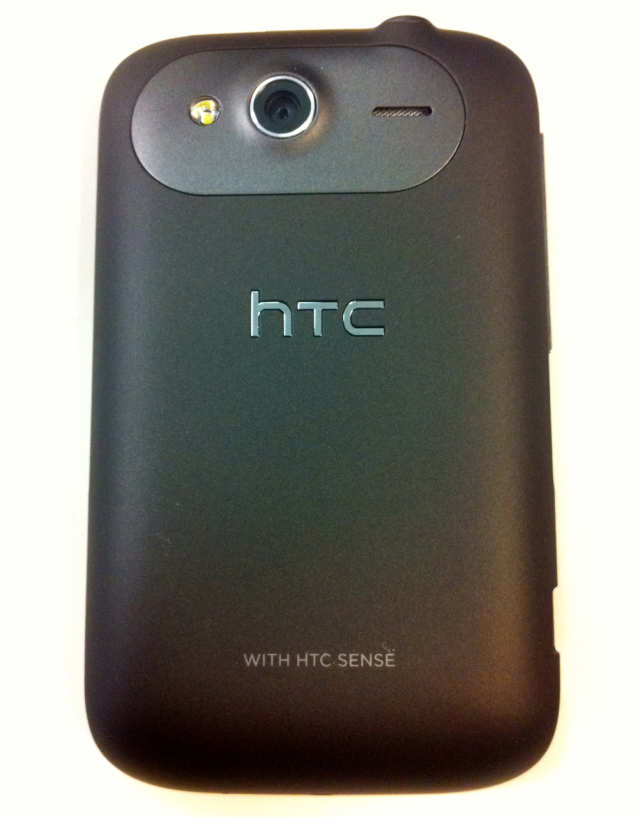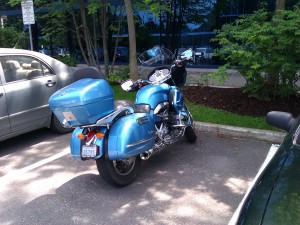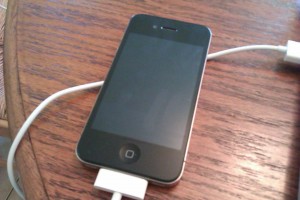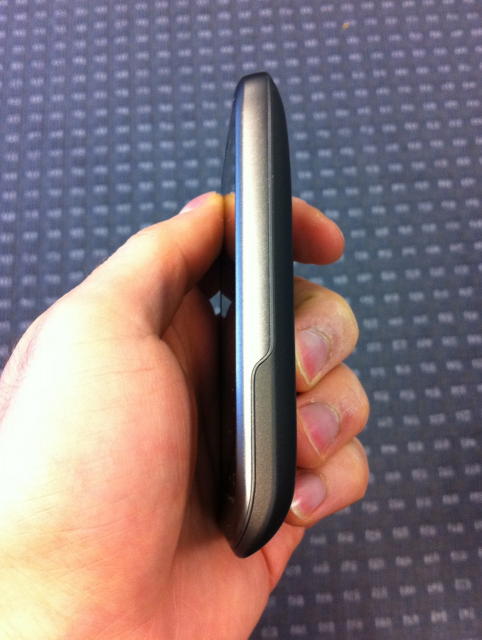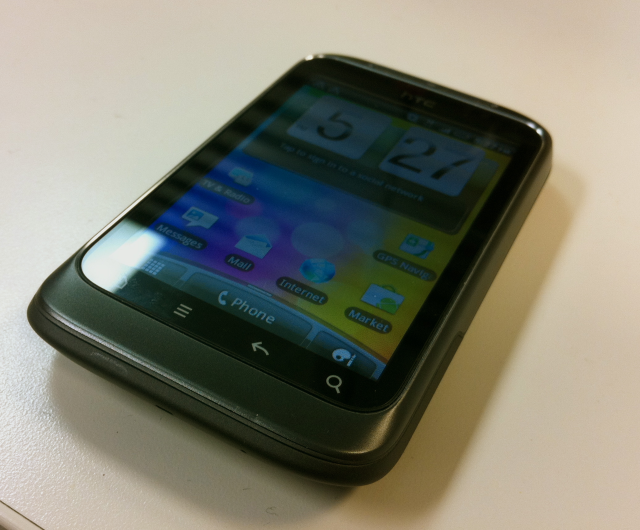HTC’s Wildfire debuted in mid 2010 as a budget Android device for many carriers around the world. In Canada, the budget Android market has been serviced quite well by Samsung and LG, who has found great success with its Optimus One line.
The HTC Wildfire S is the follow-up its diminutive predecessor, and by eschewing the original’s trackpad, boosting the processor speed, and most significantly sharpening the screen resolution, at $249.95 off-contract it may be the best budget device on the market. While not without its shortcomings, read on to see if you agree with my assessment.
Specs:
– Android 2.3.3 Gingerbread with HTC Sense 2.1
– 320×480 pixel TFT display with Gorilla Glass
– 600Mhz MSM7227 Snapdragon processor with Adreno 200 GPU
– 512MB RAM/512MB ROM
– 5MP camera with LED flash
– VGA video capture (640×480 pixels max)
– 1230mAh battery
– 101.3 x 59.4 x 12.4 mm
– 105g
The Phone
The word ‘tiny’ is too casual a word to describe this smartphone. The Wildfire S has taken what its predecessor coined mini Android and improved on it in almost every way. Under the hood we have essentially the same specs as the HTC Legend, but shrunk down to ¾ its size.
To put the S on the end is a bit of a misnomer. Introduced alongside the Desire S and Incredible S, the two higher-end models were differentiated from their predecessors not only for a bump in specs, but for the Super LCD screen they flaunted. The Wildfire S does not use the same technology, but nonetheless improves upon the original. Its 3.2” screen receives a nice boost, from 320×240 pixels to 320×480 pixels, and the increased detail definitely shows. Text is easier to read on the Gorilla Glass-equipped display, and colours, despite being limited to 256k, are vibrant throughout.
Build quality is excellent, as the plastic battery cover wraps around the phone like a glove, snapping satisfyingly into place. Due to the limited space, the SIM card is kept in a cage under the 1230mAh battery, but the microSD card is freely available, and supports up to 32GB.
Detailing is very similar to other recently-released HTC devices, eschewing the trackpad that lengthened previous generations like the Wildfire and Legend. The lower portion curves slightly towards the front, producing a modest chin that is functional and attractive. Both the volume rocker and power button, on the left side and top respectively, are easy to press, with a satisfying ‘click’.
The Wildfire S continues HTC’s strong tradition of consistency in its design fundamentals and build quality. While not quite as heavy as the Optimus One series, it is 12mm shorter, and feels better in the hands as a result.
Where Do I Belong?
The question on our minds when reviewing a low- to mid-range device like the Wildfire S is, who is buying this phone? Picture the scene when walking into a Bell retail outlet: several columns of devices, grouped into categories. You have your feature phones, many of which are loaded with operating systems that appear to be functional, but do little more than your Razr did five years ago. Some of them have touch screens and slide-out QWERTY keyboards. These are for the teenager, the text-obsessed mom, the ‘just give me something that works’ crowd.
Next are your BlackBerries, easily identifiable by their keyboards and black plastic styling. For the business person, the teenager who’s discovered BBM, the loyalist.
The iPhone stands on its own. It has a little shrine on which a demo loops, showcasing its app diversity, its media functionality, its stoicism.
Android phones take up the rest of the space, and yet they’re ultimately separate, divided more by manufacturer than their common operating system. Many of them have that desirable $0 tag underneath the dummy unit, inviting spendthrift customers to play, to explore, to upgrade. You see, most Android phones, in spite of their minimal three year buy-in price, require a data plan. So you’re spending nothing on the device, but you’re locked in for three years at $50 a month. That’s a lot of chowder for a device that’s likely already outdated, since it’s free. The good news is that for its $249.95 outright price, the Wildfire S does not require a data plan. Indeed, if you have the patience and fortitude to chase down a WiFi signal for your data needs, this tiny device can serve as quite the feature-phone replacement.
But as we’ve discovered, Android phones do not scale on modest hardware as well as Google would like us to think. Recall Bell’s own Motorola Dext, which although it ran Android 1.5 with Motoblur, was possibly the worst performing smartphone I’ve ever used. HTC has been more cognizant of this fact than its peers, and has intelligently designed Sense to be less taxing to older hardware, but even the original Wildfire was plagued with random slowdowns and crashes.
The Wildfire S fares better in general usage, since we’ve reached a nice tri-convergence in the Android world: 1) competently fast hardware is now cheap enough to equip low-cost devices, 2) Android 2.3 Gingerbread is much more stable and usable than its legacy versions, and 3) for the most part, Android apps are increasingly attractive, usable and stable.
The hardware inside the Wildfire S resembles almost identically the Legend, which was released to some fanfare a year ago. They both share Qualcomm’s 600Mhz MSM 7227 Snapdragon processor and Adreno 200 GPU, though the Wildfire S has 512MB RAM over the Legend’s 384MB. Each has a 5MP camera with LED flash, but the Wildfire takes better shots. Each too has a 320×480 pixel screen with Gorilla Glass, but the Wildfire goes with a traditional TFT LCD screen over the Legend’s AMLOED display. As a result, black levels and power consumption are better on the Legend, but colour saturation, brightness and overall responsiveness is better on the Wildfire S.
The Wildfire S is adorned with a variety of radios that attest to its relative newness: 802.11n support is built in, along with the newer Bluetooth 3.0 stack. Due to the modest battery, the Wildfire S is rated at 5h 50min talk time over 3G, which we found to be pretty spot on.
Performance
So the question remains: is Android a good choice for the casual user? It’s certainly easier to answer the question than it was a year ago. The Wildfire S runs Gingerbread quite well, most of the time, and that’s the truth.
For basic browsing, it is fast enough loading the occasional desktop version of a website, though with so few pixels it’s going to take a lot of scrolling to get from one end to the other. Mobile sites obviously fare better, and since most reputable companies have one these days, the Wildfire S makes mincemeat of even the most HTML5-slathered. It does not support Flash, however, limiting the web to what you’d likely see on an iPhone 3GS.
And while the Android Marketplace is open for business on the Wildfire S, it’s a scary place when you don’t have a compatibility matrix. Most apps scale down nicely on the smaller screen, and some games run reasonably well. But it’s difficult to know, when scrolling through the massive Marketplace, what will merely run and what will run well. The Adreno 200 GPU is what equips the HTC’s Nexus One, Desire and a number of other legacy devices, but they were all running processors clocked significantly faster. It helps that there are less pixels on which to draw a 3D world, but it’s a safe bet that other than some basic puzzle games, or low-fi action titles such as Angry Birds, this is not a gaming device.
HTC has arguably the best custom keyboard of any manufacturer, but it does not translate well onto the Wildfire S. Where I would effortlessly type on the Incredible S or Desire HD the Wildfire would miss more than half of my touches. Worse yet, there were times where the keyboard would stall and accept no input for several seconds before “bursting” with a jumble of half-recognized letters. For a device with 512MB RAM this is not acceptable and further proves how inconsistent Android is on slower hardware. Yes, you can type slower; yes, you can download a third-party keyboard. But you shouldn’t have to.
Luckily, HTC anticipated one of the keyboard issues: allowing for more traditional input methods, they bundled “Compact” and “Phone” categories alongside the traditional full QWERTY variety. Supporting T9 on both, the “Phone” method uses a regular ABC123 layout, while “Compact” makes QWERTY a bundled affair, much like the BlackBerry Pearl combines two letters into a single button. I found this, with T9 turned on, the easiest and most accurate method to type with, and kudos to HTC for thinking ahead.
Camera
The 5MP camera on the back of the Wildfire S is passable. Shots are well saturated, and free of grain in good lighting. Since this could be considered the Canon Digital ELPH of smartphones, it’s perhaps an apt comparison to say that in terms of camera quality the Wildfire S is to the iPhone 4 as a Digital ELPH is to a Canon G12.
Despite the relatively slow processor, the camera app opened, focused and took photos in very good time. When held quite still, the results were predictably sharp, but more than any device we’ve recently used any shakiness produced blurry and unusable pictures. Like all current HTC devices, there are plenty of tweaking options available, including ISO values up to 800, exposure, contrast, sharpness and saturation levels, and a handy self-portrait mode that eschews the need for a front-facing camera.
Video quality, while stymied at a meagre 640×480 pixels, produces decent results at a smooth 30fps.
Battery life
The 1230mAh battery inside the Wildfire S kept it chugging for over a day in our tests, and significantly longer than most high-end Android devices. Likely due to the smaller pixel count and low-clocked processor, there shouldn’t be any problems taking the phone for a weekend camping trip and forgetting the charger.
One of the nice things about Gingerbread is the ability to see which background processes are eating into battery life, and to kill them if they’ve run astray. This can be found in the Settings/About phone/Battery menu.
Network speed and quality
Unlike data-hungry smartphone users who would most likely opt for a more expensive device, users of the Wildfire S are more likely to be voice callers and texters first. Luckily, the device sounds great, and the earpiece is more than loud enough.
There is a mono speaker on the back of the device that produces quiet, muddled sound. Max volume is too low, and is likely due to HTC cutting costs on the amplifier. That being said, it does the job and we can’t fault it for that.
The Wildfire S supports HSDPA download speeds of up to 14.4Mbps and HSUPA speeds of 5.76Mbps. Real world testing produced speeds slightly slower than equivalent Bell HTC devices: 1.9Mbps down and 360kbps up. It seems that HSUPA is locked on the radio. This is a problem that affected the Motorola Atrix, too, but has been recently rectified with a maintenance release. Unfortunately, a similar prospect is unlikely for the Wildfire S.
Less Sense
Whereas Sense seems to scale up quite nicely (see the Sensation launching next month) it doesn’t scale very well to the smaller resolution of the Wildfire S. In particular, icons in the notification bar seem to be cut off, and blend into one another as a result.
Widgets fare better, however, and seem to work nicely on the smaller display. The menu system works the same as on its larger brethren, where you hold down your finger anywhere on one of seven homescreens for the Sense options. Fewer ringtones and wallpapers are bundled with the phone, and there are only two pre-loaded themes to choose from, some eight less than on the Incredible S, likely due to ROM constraints.
Bell has bundled a few apps with the phone, too. As usual, there is a Telenav-powered GPS Navigator, as well as the TV & Radio app which works very well over Bell’s 3G network. Perhaps a blessing in disguise, the lack of ROM space prevents Bell from bundling demos of awful Gameloft games that come standard on all their other Android devices, a practice we wish they’d cease.
First-party Android apps such as Gmail, Maps and YouTube run with aplomb, and the processor’s limitations only rear its head when attempting to do too many things at once, or when stressing the GPU’s video decoding capabilities. Videos over 480p cause the screen to stutter, but that is an expected limitation for such hardware. While not a media powerhouse by any means, for music and the occasional music video the Wildfire S gets the job done.
One minor complaint we had was the tiny amount of space reserved for applications. While this was an issue with older hardware such as the Nexus One, there is no reason to saddle newer-generation hardware with only 90MB available storage. While it is possible to transfer apps to the microSD card to save space, and there is a wizard that streamlines the process, it should not be necessary.
Conclusion
The Wildfire S isn’t pretending to be the next flagship HTC device. In fact, it was announced alongside the Desire S and Incredible S in February and barely a peep was heard in Canada until Bell announced it in late May.
It may have the same internal specs as LG’s popular Optimus One line, but for the extra money you get a well-designed piece of hardware with excellent build quality and a stable, attractive user interface. The Wildfire S took most things we threw at it with grace, and apps that stuttered were not meant to be used on a low-end device to begin with.
As a first smartphone, one cannot go wrong with the Wildfire S, and at $249.95 without a contract, and no data requirement, the entry costs are considerably lower than the higher tier. The next time a friend or family member is considering renewing his or her contract and want to pick up a cheap feature phone, do them a favour and point them in the direction of the Wildfire S.
Because once you go smartphone, you never go back.
Rating: 7.5/10
Pros:
– Excellent price to performance ratio
– Good overall performance
– Great build quality
– Nice colour saturation and overall screen quality
– Good still camera performance
– Runs latest version of Android, Gingerbread
– Excellent software stability
– Few pre-installed bloatware apps
Cons:
– Screen only shows 256k colours, touch panel is visible on white background
– Software occasionally stutters, affecting keyboard input
– Difficult to read web pages due to low pixel count
– Limited app storage space
– Scaling issues with certain aspects of Sense
Follow Daniel on Twitter @journeydan for all the latest phone quips, opinions and impressions, and remember to follow @mobilesyrup for all your phone news!
MobileSyrup may earn a commission from purchases made via our links, which helps fund the journalism we provide free on our website. These links do not influence our editorial content. Support us here.


